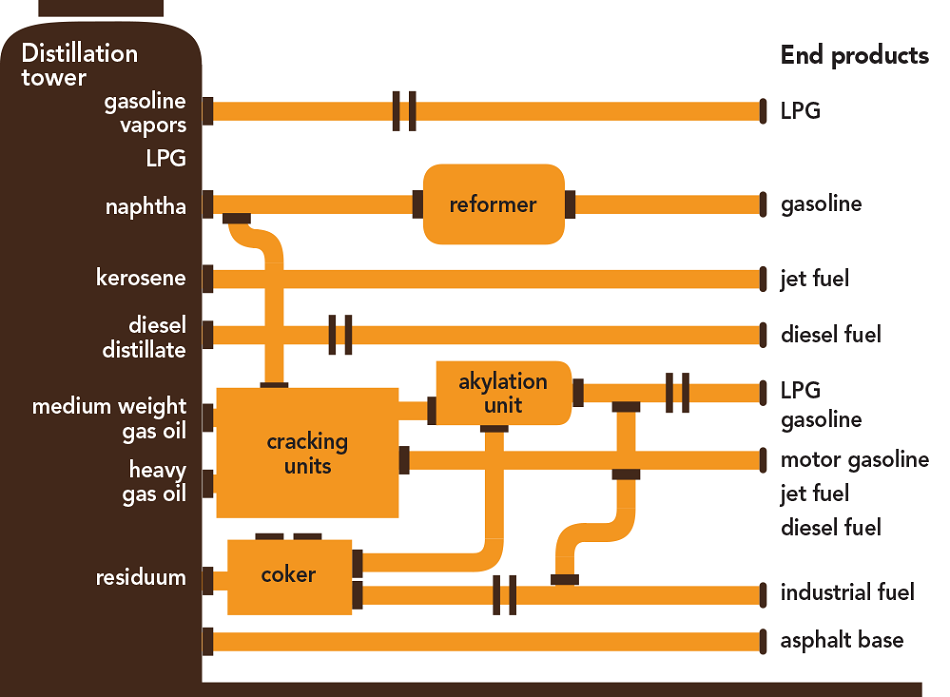Market Snapshot: How does a refinery turn crude oil into products like gasoline and diesel?
Release date: 2018-08-08
A refinery is similar to a giant chemistry set that takes crude oil and refines it into different products like gasoline, diesel, aviation fuel, and naphtha (commonly used as a paint thinner). To be as efficient as possible, refineries are normally designed to process a particular grade of crude oil rather than be able to refine all types of crude oils, which are quite variable in quality. Refineries also come in different sizes Footnote 1.
Simplified Illustration of a Petroleum Refinery

Source and Description
Source: Energy Information Administration, NEB
Description: This figure shows a schematic of a basic refinery, including an atmospheric distillation tower and the various units and products they produce.
Refinery Components
In the first step of the refining process, crude oil is heated in a furnace until most of it vaporizes into a gas. The liquids and vapours then enter an atmospheric distillation tower, which separates the liquids and vapours into different streams, or fractions, based on differences in boiling points. Heavier streams, which have higher boiling points, are collected at the bottom of the tower in liquid form. Meanwhile, lighter streams like gasoline vapours, naphtha, and kerosene, which boil and condense at lower temperatures, rise to the top of the tower in gaseous form where they are collected. Components that boil somewhere in between, such as diesel and medium-weight gas oil, are collected and withdrawn from the distillation tower at intermediate points in the column.
Some of these streams, like liquefied petroleum gas or jet fuel derived from kerosene, can be collected and shipped directly to markets for sale. Others need further processing.
Reformers convert light streams like lower octane naphtha into higher octane gasoline with a small chemical change. Cracking units use heat, pressure, and catalysts to break apart large, heavy molecules into smaller, higher-value ones like gasoline and diesel. Alkylation units combine smaller molecules into larger ones. Desulphurization units (not on the diagram) remove sulphur.
Coking units, or cokers, apply high amounts of heat and pressure to break down the molecules in the heaviest streams in smaller molecules, leaving petroleum coke as a bi-product. Products from a coking unit include butanes, naphtha, diesel, and petroleum coke (which can be used in place of coal for some industries, like power generation and steelmaking).
In order to process heavy oil, which is most of the oil produced in Canada, refineries require a coking unit. However, few Canadian refineries have cokers, which means most Canadian heavy oil must be exported.
For more on the Canadian refining industry, please see the Canadian Refinery Overview 2018.
- Date modified:
